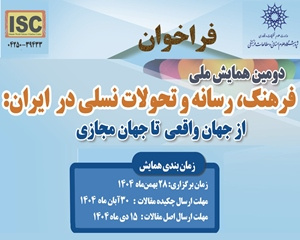بررسی و تحلیل آسیب پذیری مناطق مسکونی با رویکرد پدافند غیرعامل، مطالعه موردی: شهر تبریز (مقاله علمی وزارت علوم)
درجه علمی: نشریه علمی (وزارت علوم)
آرشیو
چکیده
با بررسی جنگ های اخیر در قرن بیستم و بیست ویکم مشخص می شود که با پیشرفت های تسلیحات و تجهیزات نظامی مناطق مسکونی شهری بیشتر در معرض خطر تهاجم طرف های جنگ قرار گرفته و بیشترین تلفات انسانی به جای نیروهای نظامی درگیر در جبهه های اصلی نبرد، در بین مردم ساکن در مراکز شهری با بار جمعیتی زیاد ثبت شده است. در نگاه سیاست گذاران و صاحب نظران، ایمنی و امنیت شهری یکی از اساسی ترین پیش فرض های جامعه جهانی برای برنامه ریزی انسان محور است. امنیت از جمله عوامل بنیادین و اساسی است که فقدان آن باعث ایجاد بحران در جوامع می شود. لذا رعایت اصول پدافند غیرعامل در نواحی مسکونی برای کاهش اثرات تهاجم ها بسیار ضروری است. هدف این پژوهش شناسایی پهنه های آسیب پذیر مناطق مسکونی شهر تبریز با رویکرد پدافند غیرعامل است. عوامل آسیب پذیر مناطق مسکونی با استفاده از نظر کارشناسی در شش معیار و 17 زیرمعیار دسته بندی شده اند. سپس با استفاده از تکنیک Dematel با اخذ نظرات خبرگان روابط درونی بین معیارها و زیرمعیارها تعیین شده اند. در مرحله بعدی هریک از معیارها و زیرمعیارها با روش ANP وزن دهی شده و وزن نهایی هر معیار و زیرمعیار محاسبه شده است. در نهایت با ایجاد لایه اطلاعات مکانی هر زیرمعیار در محیط GIS و اعمال ضرایب آن ها نقشه آسیب پذیری هر معیار به دست آمده و با تلفیق نقشه ها آسیب پذیری نهایی مناطق مسکونی تهیه شده است. تحلیل نقشه نهایی نشان می دهد که مناطق مرکزی شهر و نیز مناطق حاشیه نشین که در شمال شهر واقع شده اند، از آسیب پذیری بالایی برخوردار هستند.Investigating and analyzing the vulnerability of residential areas with passive defense approach - Case study: Tabriz City
Extended IntroductionCivilians and cities have always been affected by war. However, World War II was the first war in which military strategies succeeded in systematically destroying cities and killing civilian populations on a large scale. It was no coincidence that atomic bombs were also dropped on cities. In the eyes of policymakers and experts, urban safety and security is one of the most basic assumptions of the global community for human-centered planning. Humans have always faced threats in their lives and constructions and have experienced all kinds of accidents throughout history. One of the basic ways to prepare for crises is to be aware of the degree of vulnerability of the city, especially residential buildings, in case it occurs. Therefore, knowing the degree of vulnerability of urban buildings caused by threats, it is possible to increase the preparedness against any threat to a great extent by adopting strategies. Identifying the risk of possible damages plays an important role in prevention and preparation to face and deal with the negative effects of urban threats and is very important in terms of controlling human and financial damages.Materials & MethodsIn this research, considering the theoretical issues and the examination of global experiences regarding the vulnerability of residential areas against invasion, vulnerability criteria were extracted and completed using the Delphi method. After selecting the criteria and sub-criteria for weight calculation, using the Dematel method, factors that are effective in residential vulnerability have been used. The main goal of the Delphi method is to achieve the most reliable consensus of a group of experts' opinions through a series of focused questionnaires with controlled feedback. By obtaining the consensus of a group of experts through this process, researchers can identify and prioritize issues and develop a framework for their diagnosis. In this research, Delphi panel members were selected as non-probability and combination of targeted or judgmental and chain methods. In this research, Kendall's correlation coefficient was used to determine the level of consensus among panel members. The value of this scale is equal to one when there is complete coordination and zero when there is no complete coordination. Kendall's correlation coefficient for this research was equal to 0.67, which can be trusted as a relatively moderate to high value according to the order of its factors. Building a network analysis process model requires knowing the relationships and interactions between the criteria and sub-criteria of the problem in order to create the most realistic state of the network, which was extracted in the previous stage through Dematel and with the opinions of experts. ANP includes determining the final weights using the method of extracting weight vectors and forming hypermatrix. Results & Discussion,The way of distribution of buildings in terms of floors and especially high-rises has created a special spatial system that has overcome all other urban elements and has turned the city into a compact structure. In terms of the quality of the houses, it can be said that due to the presence of dilapidated structures in the central part of the city as well as informal settlements in the peripheral areas, these houses are not of good quality and are highly vulnerable.From the point of view of passive defense, the passageways and the ability of the network to access the space and the conditions of sheltering are of special importance. Examining the map of vulnerability caused by the access network and access to open spaces in the residential areas of Tabriz shows that the central areas have narrow roads and high density and have high vulnerability. In discussing the vulnerability of residential areas in this research, population density and building density have been considered. By increasing population density in vulnerable areas with specific dimensions, the number of vulnerable population increases. According to the vulnerability map caused by the density of residential areas in Tabriz city, the population distribution is not the same throughout the city and dense population tissues are often located in the central areas and in the range of peripheral tissues (northern parts of the city) and are of high vulnerability. Has Distance and proximity to danger centers is very important in terms of passive defense. The location of these risk centers in the vicinity of human settlements makes it necessary to respect the privacy of these centers. The map of the privacy of dangerous centers in Tabriz shows that the residential areas of Tabriz are not in a good condition in terms of respecting the privacy of high-risk centers and will be highly vulnerable in the event of an attack. The access map of residential areas to relief centers in Tabriz city shows that the distribution of these centers is not balanced in all parts of the city and is mostly concentrated in the central parts of the city, which causes many problems with the influx of people in the event of a crisis. will face these centers. After the occurrence of crises, especially air raids that destroy people's shelters, the temporary accommodation of people is very important. One of the temporary accommodation centers that are considered are educational centers. Also, nowadays spaces are considered as multi-purpose parks and sheds that are used in normal conditions and are considered as temporary accommodation centers in times of crisis. The map of temporary accommodation centers in the city of Tabriz shows that, firstly, these centers are not evenly distributed in all parts of the city, and secondly, they do not have enough numbers according to the existing population. ConclusionMaps and research findings show that the residential density criterion with a weight of 0.356 is in the first place among residential vulnerability factors in Tabriz city. The second rank is assigned to the criterion of residential context with a weight of 0.257. Access criteria, access to relief centers, privacy of danger centers and temporary accommodation are in the next ranks respectively.







